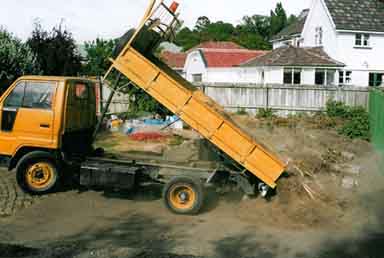 |
It all began when we moved house in late 2003.
Some small rocks, bridges and track from the original Rocky Creek Railway arrived on site looking for a new home.
At our new home there was a large (5x15m) former vegetable garden, now knee high in weeds, crying out to have a railway built on it (well in my head anyway).
It was all flat at ground level, and the new railway needed to be elevated slightly so you didn't have to bend over to put trains on the track.
So truck loads of dirt were dumped on the site when we excavated the front lawn for a new garage. It took several months to hand dig through all of it to get all the tree roots and stones out of it. |
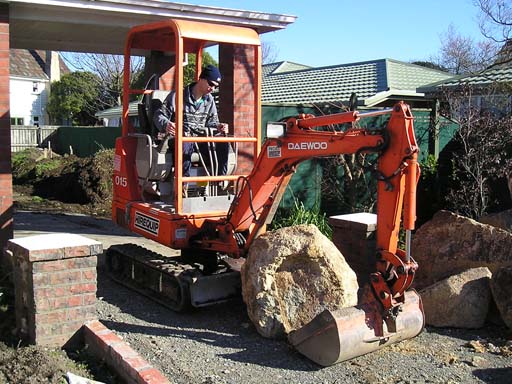 |
Next was the 'rocky' part of the railway. Ten tons of rock was purchased from a local quarry and dumped on the front driveway.
A small 1.5 tonne digger was used to bring them to the back yard. It was the only one which
could get under the house overhang. It struggled with the biggest rock and could only drag it.
The rocks were placed in a line to make a retaining wall. A big hollow was dug in the middle and an old bath placed in the gap to make a water pond. |
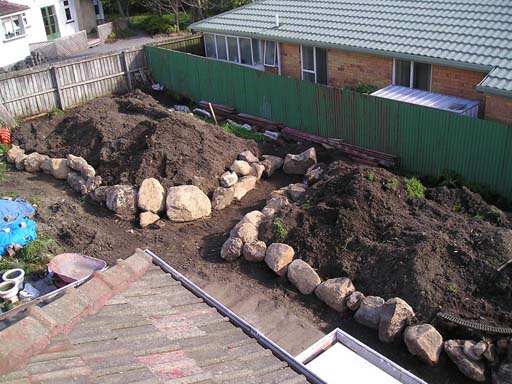 |
I looked at the two islands of dirt and worked out a basic track plan which would allow for a viaduct across the future water pond.
The track plan I came up with was a basic figure 8, which crossed itself with a clearance of 300mm.
To work out the grades I followed Greg Hunters fomula (see the links page) which says that grades on curves should always be less than straight
track due the natural resistance of the curve. So the straights have a grade of about 4% and the curves about 1%.
Using a level and a shovel, I moved dirt to create the basic formation. Then I put down some borrowed track (because I didn't own any) on the rough formation
and invited fellow members of the Christchurch Garden Railway Society to bring some trains around and test it for the day.
|
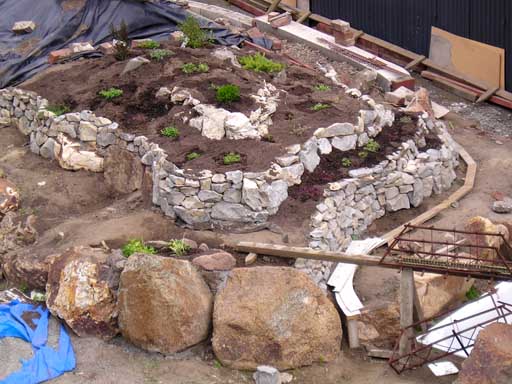 |
With the concept track plan and grades proven to work, I started to create the final railway.
Some small grey rocks were acquired from the West Coast and these were concreted together to form retaining walls.
Plants were planted as each section was finished, to stop the exposed dirt being blown around in the winds, and to combat weeds.
Because the dirt would take some time to settle fully, I couldn't put the track directly on the ground.
|
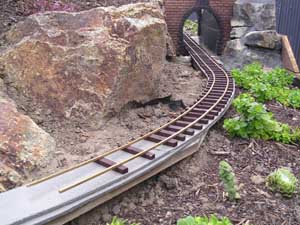 |
So a wooden sub base was made with posts driven into the ground for stability.
I used old fence posts and rails and other old wood lying around because it was free.
This was capped with some cement board, painted grey, to keep most of the water off the wood.
The wood may eventually rot, but I will deal with that when it happens.
Later track is build on a framework of treated garden stakes.
I made some of my early track using 4.76mm square brass rod nailed to trellis sleepers.
But this has since all been removed and replaced with second hand commercial track from LGB and Aristocraft.
|
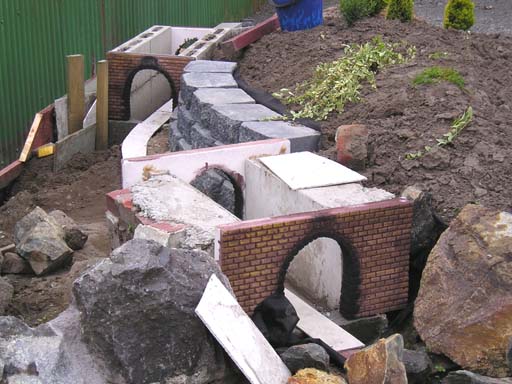 |
There are two tunnels on the line. The inside walls of the tunnel were made using concrete blocks and concrete paving stones.
The tunnel mouths were carved from a block of Hebel lightweight concrete.
More details of how this was done can be found on the bridges page.
|
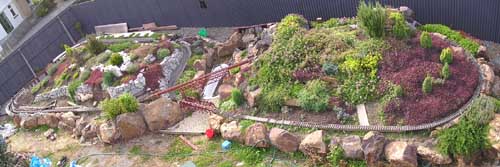 |
By the time the track was laid the plants were well established. Some had been there two years.
|